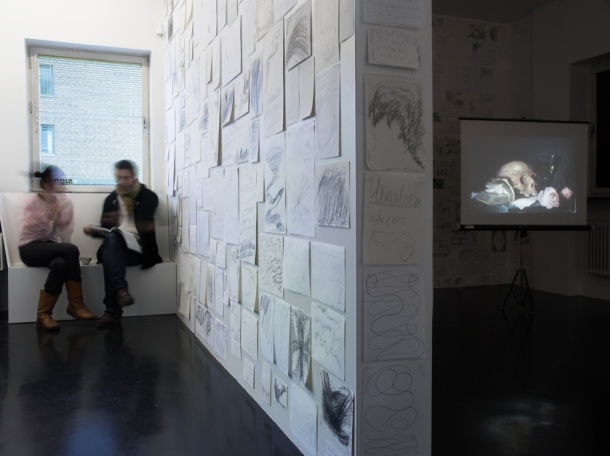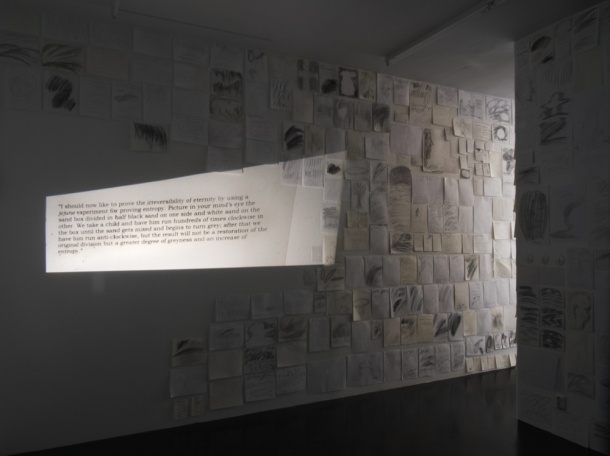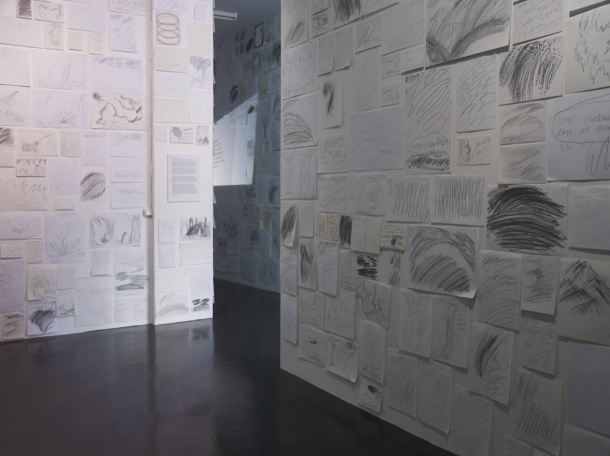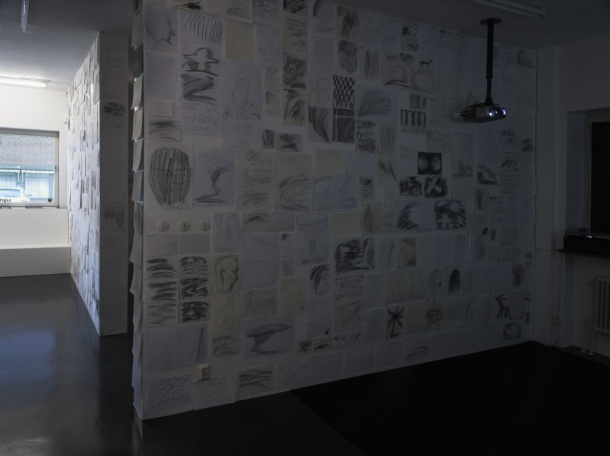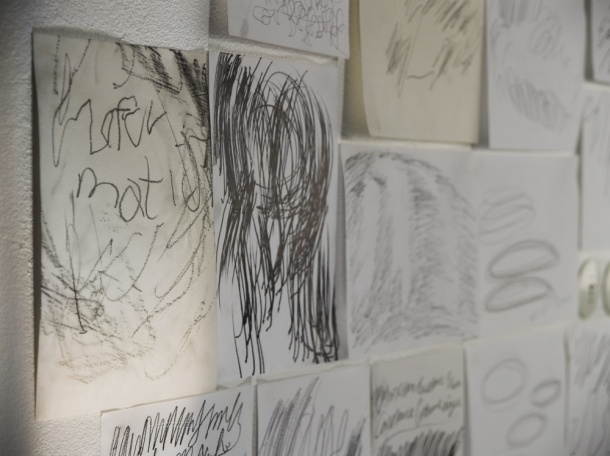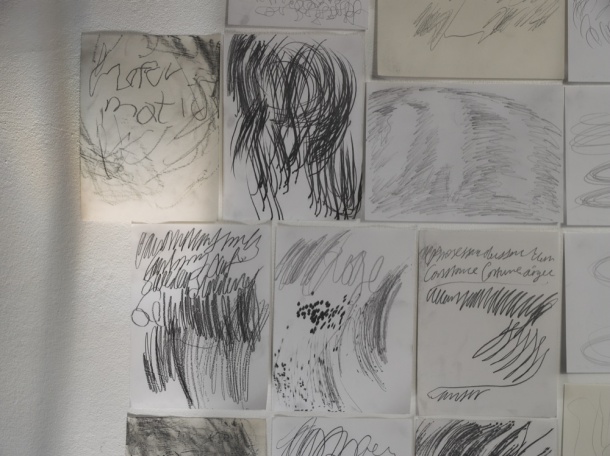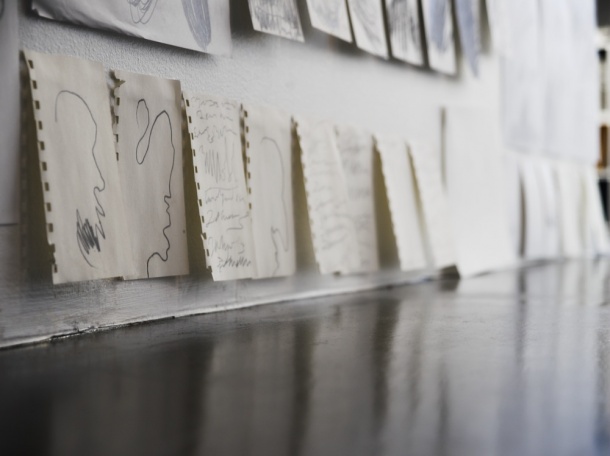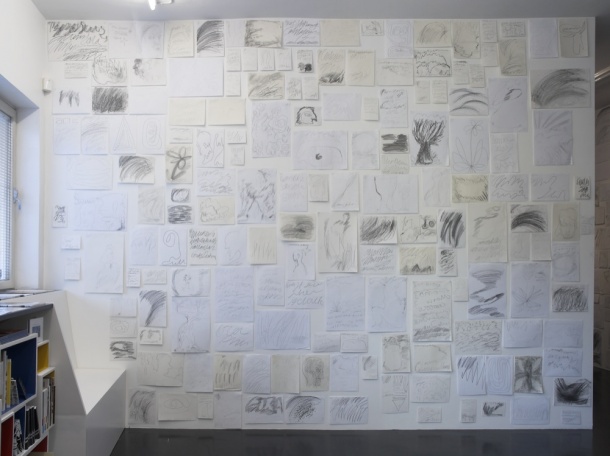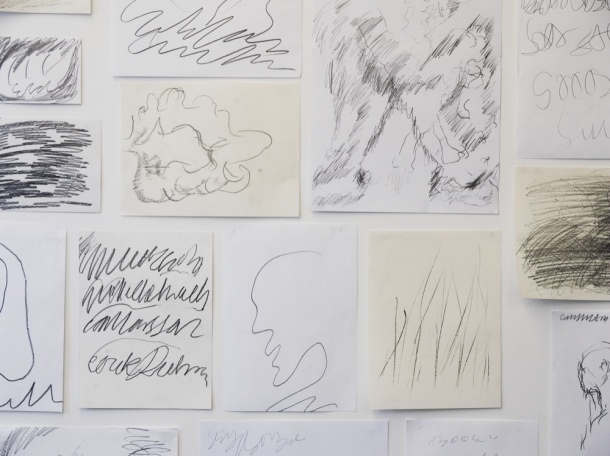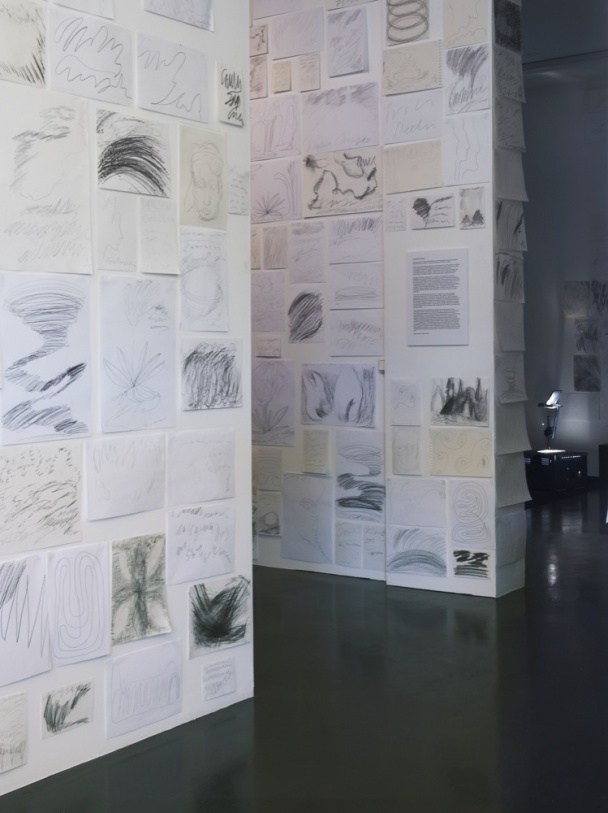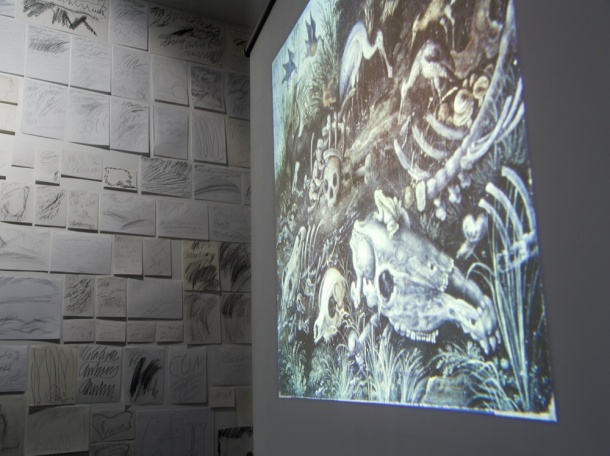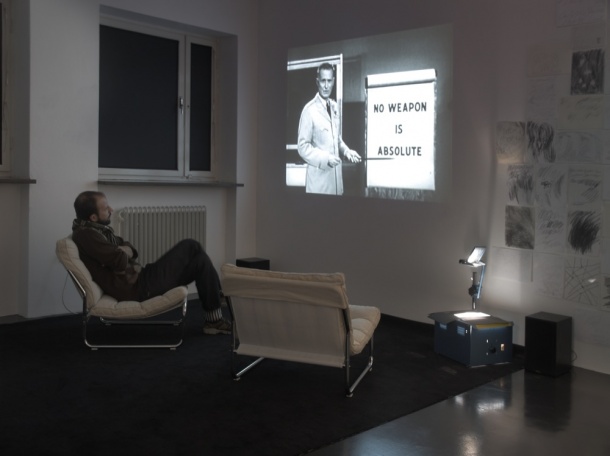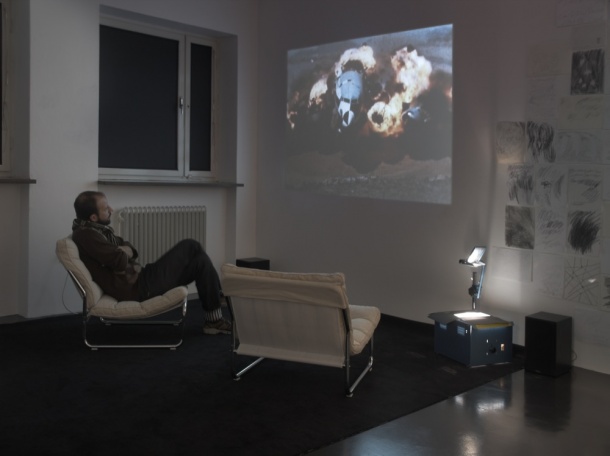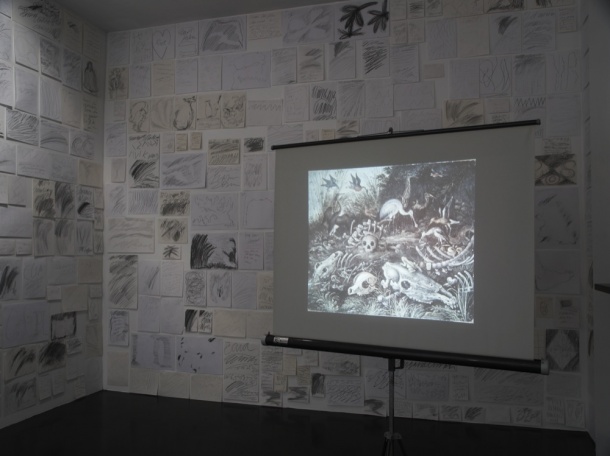Johan Grimonprez
Martin Karlsson
Robert Smithson, quotation from “A Tour of the Monuments of Passaic, New Jersey”
Vanitas motifs
10 November–17 December 2006
What is our approach to the eternal issues of life, death and love? How do we formulate the incomprehensible? The exhibition THK is a reflection on this theme based on materials stretching from the Vanitas tradition of the 17th century to contemporary attempts to master, control and understand what lies beyond human powers and influence.
Johan Grimonprez’s film Dial H-I-S-T-O-R-Y, 1997, is a chronological account of the history of aeroplane hijacking using TV excerpts and documentary material interspersed with footage from advertising and science fiction films together with 70’s disco music. The film episodes are accompanied by a narrative inspired by the American author Don DeLillo’s novels White Noise and Mao II that reflect on the value of the spectacular in our catastrophe culture. If one cannot control death one can stage it in order to create an illusion of control.
With an interest in spiritist artists like Hilma af Klint (1862-1944) as well as the phenomenon of automatism, Martin Karlsson determined to investigate the validity of automatism today as a creative process and artistic method. The work Automatiska teckningar (Automatic Drawings), 2005-2006, consists of 1266 drawings that fill the entire exhibition space of Signal. In his art Martin Karlsson works within the scope created in the relationship between fiction and reality. Through works based on role playing and the documentary he challenges our understanding of a definitive distinction between the two.
In the essay entitled “A Tour of the Monuments of Passaic, New Jersey”, published in Artforum in 1967, Robert Smithson draws parallels to the illusion of control and of shifting time made possible, for example, by the film medium. In order to test this illusion he constructs a facile, yet comprehensible and illustrative hypothesis that reflects upon the irrevocable state of time – the impossibility of turning back time.
The exhibition also includes slides of paintings in the collections of the Nationalmuseum that illustrate the Vanitas motif. Vanitas (vanity) was a genre of painting that reached its zenith in Europe during the 17th century, an era of constant war and epidemics of plague. Vanitas was a warning to people not to put too much faith into material values and it reminded them of the transitory nature of life and the certainty of death, often with religiously inspired allusions to a better life after this one. The Vanitas paintings included in the exhibition are David de Heem’s Vanitas Still-life with Skull, Book and Rose (c. 1570-1632), Christian Thum’s Still-life with Instruments of Astronomy (c. 1625-1696) and Roelandt Savery’s Memento Mori (c. 1576-1639).
✝⚓♥ is the first part of a study being developed by Signal and concerned with our function as an exhibition venue and our modus operandi together with the inherent possibilities. Within the framework of this project we shall be collaborating with the American artist Julie Ault. The project is supported by the Framtidens Kultur Foundation and The Arts Grants Comittee/Iaspis.
Thanks to Louisiana Museum for Moderne Kunst, Humlebæk, Denmark
Zapomatik, Gent, Belgium
Nationalmuseum, Stockholm

